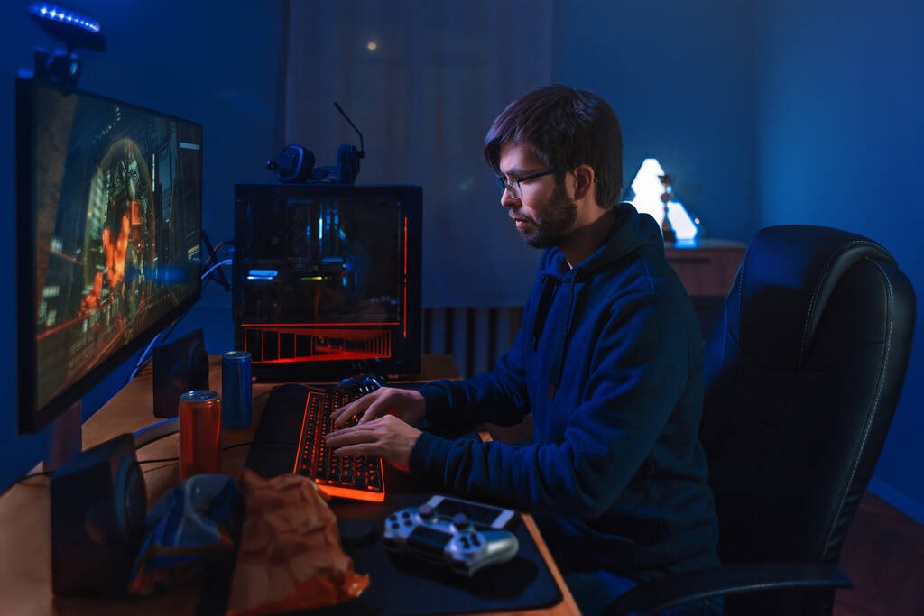“Level up your gaming experience today! Explore our list of top-performing gaming monitors guaranteed to provide maximum resolution & speed”
The first thing that draws attention when choosing a gaming monitor is its resolution. Resolution refers to the number of pixels on the screen, with higher resolutions offering more detail and clarity. The most common resolutions for gaming are Full HD (1920×1080), Quad HD (2560×1440), and 4K (3840×2160).
For many gamers, Full HD is sufficient for smooth gameplay, especially for those using lower-end hardware. It provides a good balance between visual quality and performance, allowing for higher frame rates. However, as gaming technology advances, higher resolutions are becoming increasingly popular. Quad HD strikes a balance, providing significantly more detail while still being less demanding on your system than 4K. These gaming monitors from Gain City offer a variety of options for those seeking to upgrade their setup. 4K monitors, on the other hand, offer breathtaking visual fidelity, making them ideal for those who want the sharpest, most detailed graphics. However, 4K requires powerful hardware to run games at high frame rates, so it’s best suited for gamers with robust setups.
Refresh Rate: The Importance of Smoothness
While resolution determines the sharpness of your visuals, refresh rate dictates how smooth the movement appears on the screen. Measured in Hertz (Hz), the refresh rate indicates how many times per second the screen can refresh its image. A higher refresh rate translates to smoother, more fluid gameplay, which is particularly important in fast-paced action games such as first-person shooters or racing games.
Standard monitors typically feature a refresh rate of 60Hz, which is fine for casual gaming, but competitive gamers will want something faster. A 120Hz or 144Hz refresh rate is considered optimal for a smooth gaming experience, as it reduces motion blur and enhances responsiveness. For the most demanding gamers, 240Hz monitors offer an ultra-smooth experience, though it’s worth noting that the difference in performance between 144Hz and 240Hz may not be as noticeable for everyone.
Response Time: Eliminating Lag
Response time refers to how quickly a pixel can change from one color to another, typically measured in milliseconds (ms). A lower response time reduces motion blur and ghosting, making it essential for fast-paced games where every detail matters. Monitors with a response time of 1 ms to 5 ms are ideal for gaming, as they minimize visual artifacts and ensure that movements are crisp and clear.
In competitive gaming, even the slightest delay can affect your performance. A fast response time is crucial in genres like first-person shooters and real-time strategy games, where split-second decisions can make a huge difference. Fortunately, many modern gaming monitors come with low response times, providing an excellent experience across most game types.
Panel Type: Visual Quality and Viewing Angles
The type of panel used in a gaming monitor can influence both visual quality and viewing angles. There are three main panel types to consider: TN (Twisted Nematic), IPS (In-Plane Switching), and VA (Vertical Alignment).
- TN panels are known for their fast response times and high refresh rates, making them popular for competitive gamers who prioritize performance over image quality. However, they tend to have poorer color reproduction and narrower viewing angles compared to IPS and VA panels.
- IPS panels offer superior color accuracy and wider viewing angles, making them a great choice for gamers who enjoy games with rich, vibrant graphics. While their response times may not be as fast as TN panels, many modern IPS monitors come with low enough response times to make them suitable for competitive gaming.
- VA panels fall somewhere in between, offering good contrast ratios and decent color reproduction. They typically have slower response times than TN and IPS panels but excel in producing deep blacks and high contrast, making them ideal for immersive single-player experiences.
G-Sync and FreeSync: Smoothing Out Stutters and Tearing
Screen tearing and stuttering can disrupt your gaming experience, especially in fast-paced games. To combat these issues, many gaming monitors come with technology such as NVIDIA’s G-Sync or AMD’s FreeSync. These technologies synchronize the refresh rate of the monitor with the frame rate of the graphics card, reducing screen tearing and providing a smoother experience.
G-Sync and FreeSync are particularly useful for gamers with mid-range systems, where frame rates may fluctuate during intense scenes. While G-Sync is exclusive to NVIDIA graphics cards, FreeSync works with a wider range of AMD and some NVIDIA cards. Both technologies enhance visual fluidity, ensuring that you get the most out of your monitor.
Connectivity and Ergonomics: Enhancing Convenience and Comfort
A gaming monitor’s connectivity options play a significant role in its versatility. Look for monitors with HDMI, DisplayPort, and USB ports to ensure compatibility with various gaming consoles and PCs. USB ports also allow for easy peripheral connections, such as keyboards and mice.
Ergonomics are just as important, especially if you spend long hours gaming. Adjustable stands, tilt, swivel, and height adjustment options ensure that you can set up the monitor at an optimal angle for comfort. Additionally, many gaming monitors come with blue light filtering technology to reduce eye strain, which is particularly helpful during extended gaming sessions.
Conclusion: Finding the Perfect Gaming Monitor
Choosing the best gaming monitor depends on your specific needs and preferences. Whether you prioritize high resolution, a fast refresh rate, or vibrant colors, the ideal monitor will elevate your gaming experience. Key features to consider include resolution, refresh rate, response time, panel type, G-Sync or FreeSync compatibility, and ergonomics. By carefully evaluating these factors and understanding how they impact your gameplay, you can find a monitor that aligns with your gaming style and provides a superior experience. Ultimately, investing in the right gaming monitor can transform your gaming setup, providing you with the clarity, speed, and immersion necessary to enhance every gaming session.

